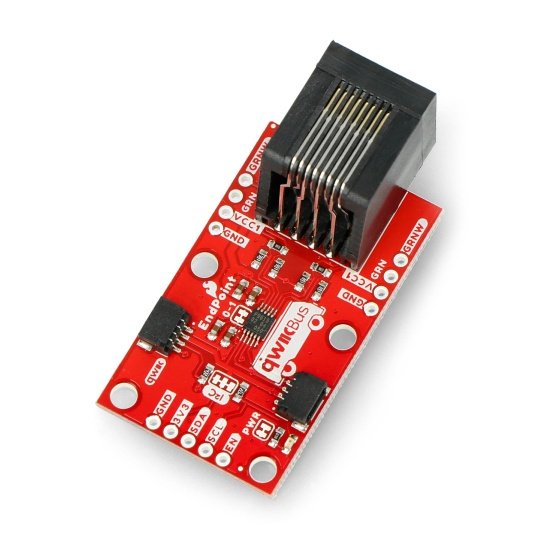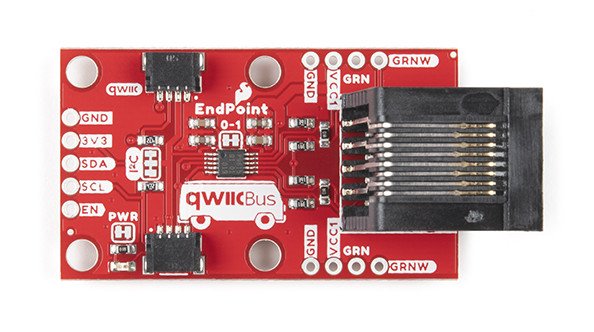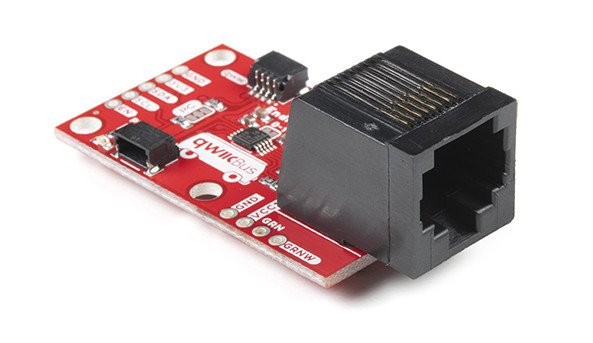Product description: QwiicBus EndPoint - SparkFun COM-16988
QwiicBus system component to extend the range of the I2C communication bus. It usesNXP PCA9615IC which converts two default I2C signals (SDA data line and SCL clock line)to four differential signals: two for SCL and two for SDA. They are transferred viaEthernet cableconnected to QwiicBus EndPoint via RJ-45 socket built in the board. Maximum distance of such transfer is about 30 meters. The product is theend point of the QwiicBus system. A QwiicBus MidPoint element is also available in the offer. The kit does not include an Ethernet cable.
Presentation of the components ofthe QwiicBus system.
QwiicBus communication
QwiicBus keeps the I2C protocol when transferring data (does not require changing to RS-485 or 1-Wire), using differential transfer. It allows to conveniently connect other components of the QwiicBus system (such as MidPoint) via Ethernet cable. This is the latest version of the QwiicBus Endpoint, where two pins have been added for soldering, using the unused pair of wires in the RJ-45 connector. They can be used for any application.
Pinout description
Apart from two Qwiic connectors and RJ-45 port the board has I2C bus pins in form of 2.54mm pins for soldering, especially useful in prototyping:
- 3V3- power supply
- GND- ground
- SDA- data line
- SCL- clock line
Details about board architecture and its pins can be found inuser manualprepared by manufacturer.
Application of QwiicBus system
- Creating networks of sensors within home automation
- Extension of the range of projects based on I2C communication
- Due to high resistance to interference, it can be used near their sources, e.g. motors
QwiicBus EndPoint specification
- I2C supply voltage: from 2.3 V to 5.5 V
- Differential supply voltage: from 3.5 V to 5.5 V
- Embedded IC type: PCA9615
- Pin pattern for self-soldering: 2.54 mm
- Maximum transmission distance using QwiicBus: up to 30 m
















































































































































































































































































































































